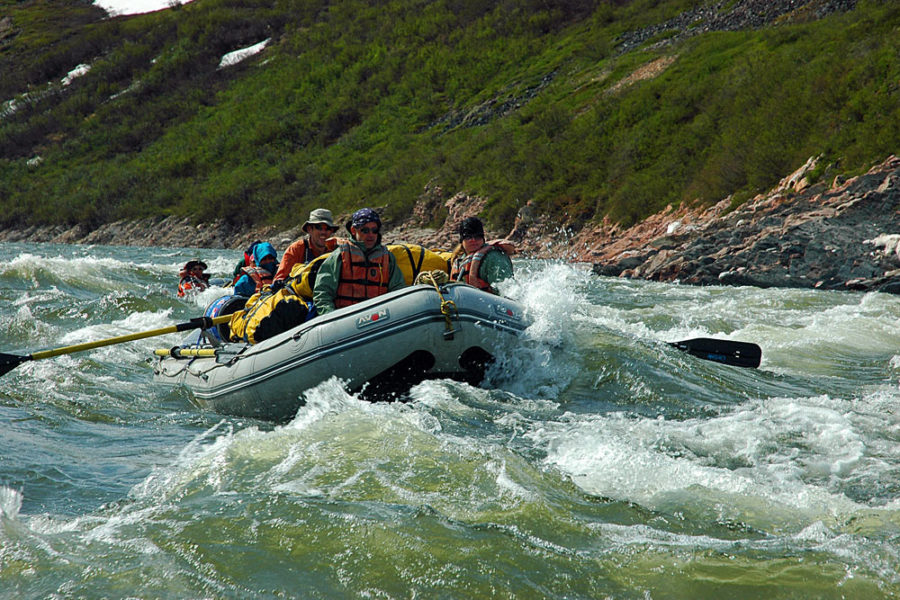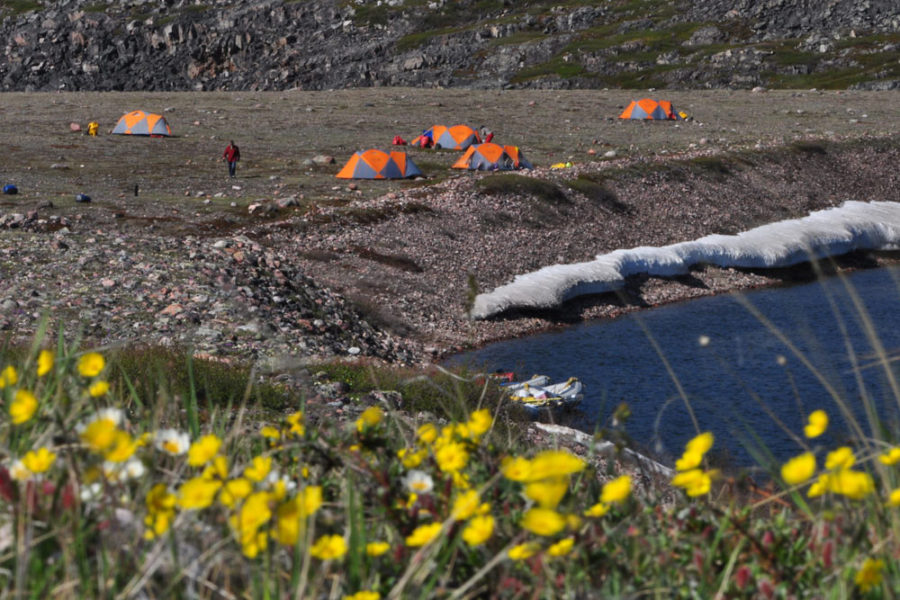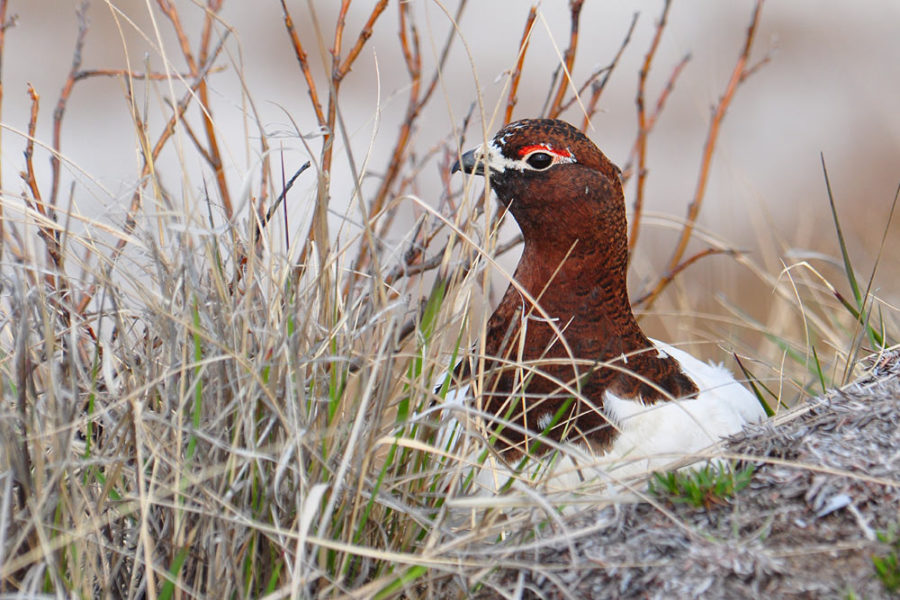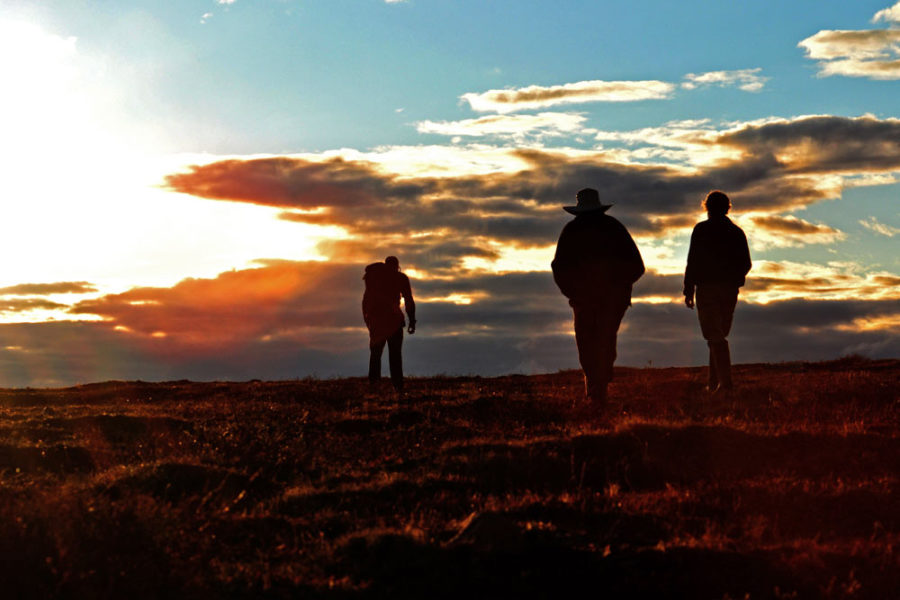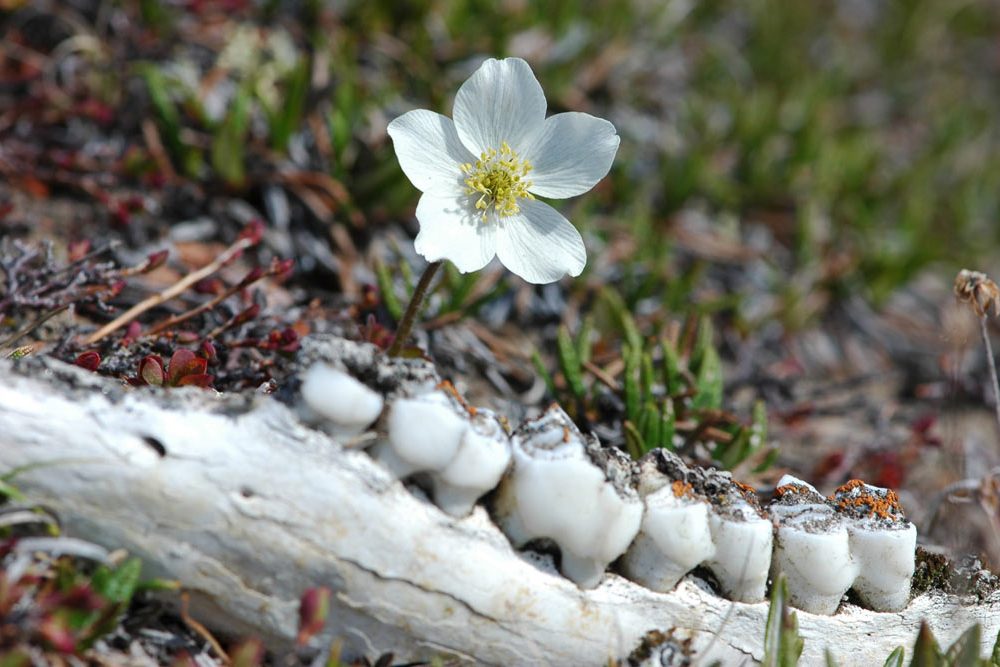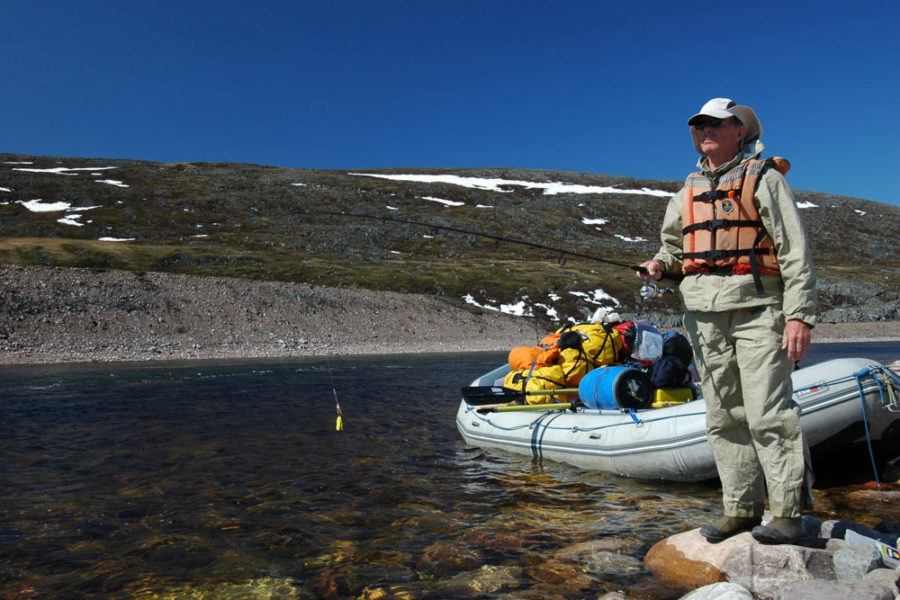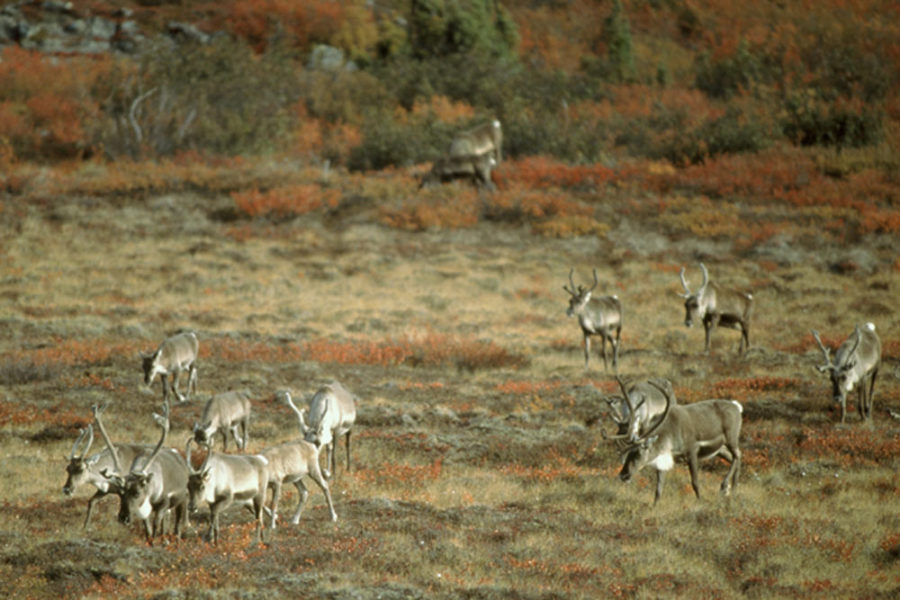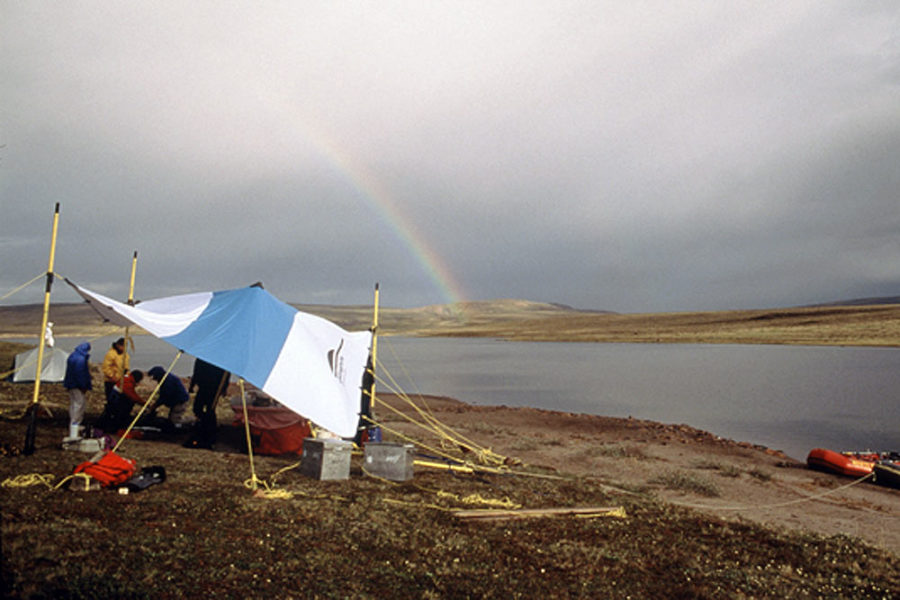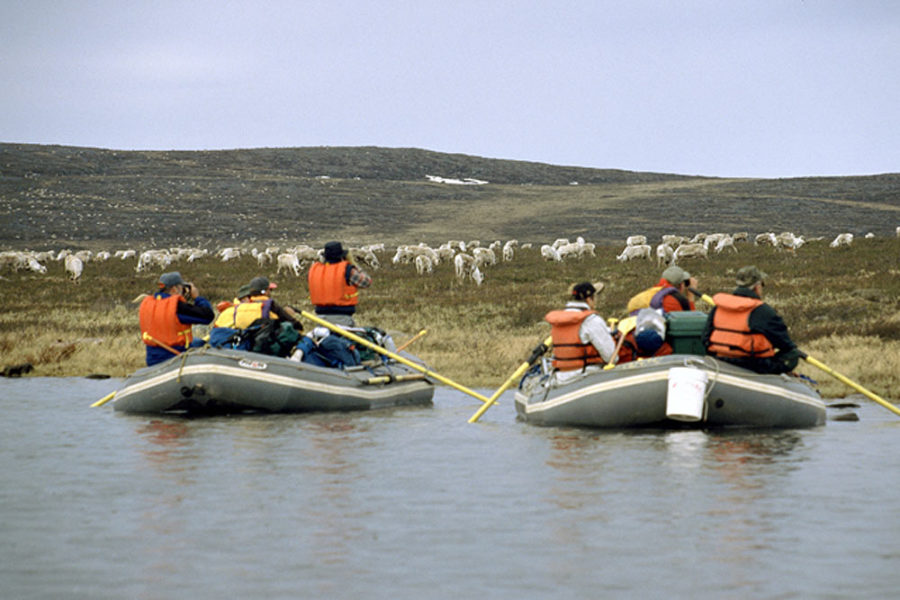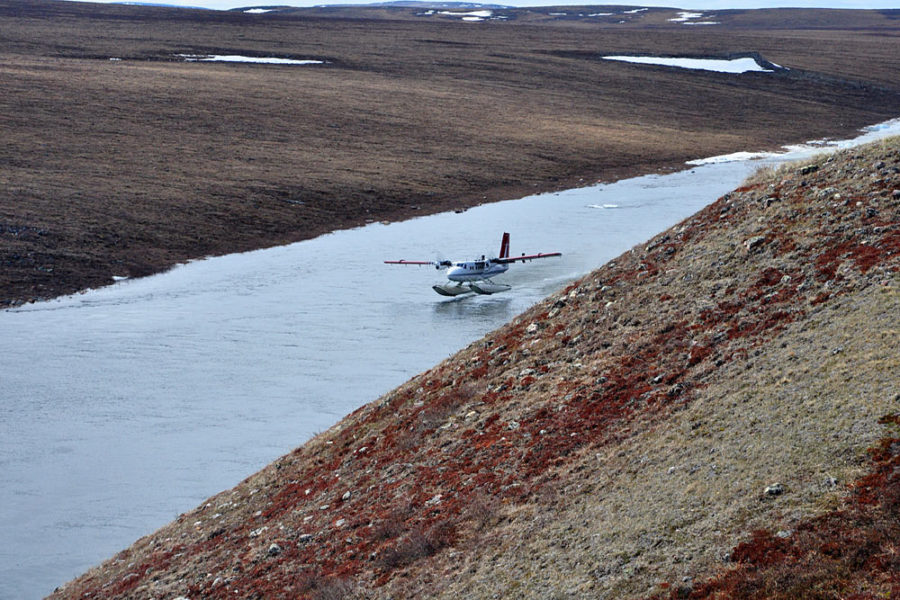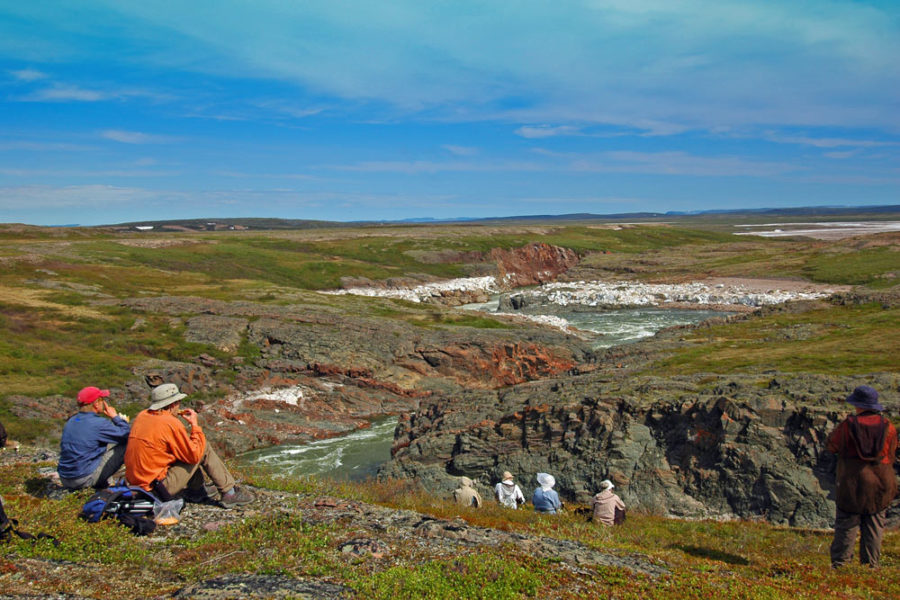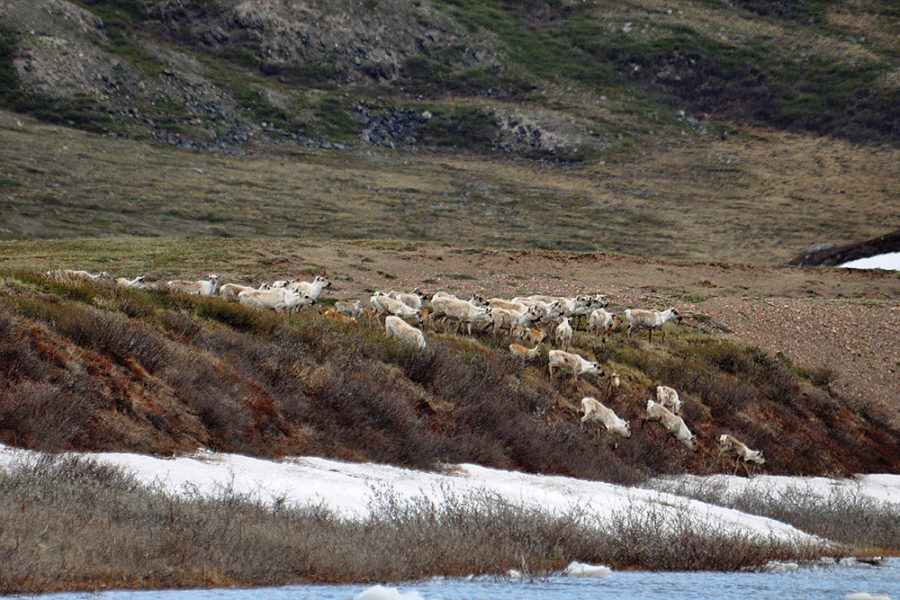Itinerary
The following is a tentative agenda and has been designed with much thought to capitalize on the most scenic and exciting parts of the river while making time on other sections. Your guides will adjust the schedule to make the best use of river and weather conditions.
Trip length: 12 river days
Meals included:
Breakfast = B | Lunch = L | Dinner = D
Day 0 YELLOWKNIFE
Your journey north will be a refreshing departure from everyday life. You’ll fly over the largest expanse of wilderness in the world, pass through quieter airports, meet friendlier service personnel, and generally begin to immerse yourself in the wilderness experience that is about to unfold.
You should plan to arrive in Yellowknife for our pre-trip orientation meeting which will be held in the Explorer Hotel at 8 p.m.
Please note that hotel costs and meals while in Yellowknife are not included in the trip.
Day 1 (L/D) TUNDRA FLIGHT
8 a.m – Meeting in the hotel lobby after breakfast. Weather permitting, we’ll fly immediately into the river. After setting up camp and lunch, there will be plenty of time for our first hike in the surrounding hills to look at the wildflowers and wildlife of the area.
Day 2 (B/L/D) KATHAWACHAGA LAKE
We’ll inflate and load the rafts and start down river. Shortly after leaving Kathawachaga Lake we stop on the small island of Nadlock, the site of an old Inuit campsite. One of the few sites of its kind in the Nunavut, it’s believed the Inuit used caribou antlers and hide to cover the stone tent rings that are still standing. The island also has an uncommon collection of nesting birds – Ring-billed Gulls, Arctic Terns, Redpoles, Yellow-billed Loons, Red-necked Phalaropes, Canada Geese, plus many others. Camp will be made near Bellanca Rapids. This rapid was named after an aircraft that crashed near here in the 1940s – a Bellanca CH-300 Pacemaker.
Day 3 (B/L/D) HIKING
We’ll spend a day hiking and exploring the hills around the rapids. It’s common to see muskoxen, caribou, and wolves – there’s an active wolf den in this area.
Day 4 & 5 (B/L/D) PEREGRINES & GYRFALCONS
The current picks up as we wind our way downstream through the spectacular tundra landscape. The birders of the group can look forward to seeing both Peregrine and Gyrfalcons nesting along with Golden Eagles and countless ducks and waterfowl. We also keep a constant lookout for caribou, wolf, grizzly and of course the muskoxen. The landscape always lends itself to hiking, whether it is on our once-a-day stop for a short walk away from the river or from each campsite. This allows you plenty of time to study the numerous wildflowers, find and photograph a Redpole’s nest hidden in the grass, or just enjoy the view.
Day 6 (B/L/D) FISHING CREEK
We take the day off to hike and explore the tundra. We camp at a small unnamed river that flows into the Burnside from the south that we call Fishing Creek. As well as excellent hiking, it’s one the best fishing locations on the river.
Day 7 & 8 (B/L/D) MARA RIVER
Arriving at the confluence of the Mara River, we’ll spend a day here walking up a local peak to wonder at the vastness of the valley. Being above the tree line, wood on the river is scarce. All our cooking is done over propane stoves and we try to leave each camp in the pristine state that we found it.
Day 9 & 10 (B/L/D) BURNSIDE FALLS
From the confluence of the Mara to Burnside Falls the river is squeezed between the narrowing banks that rise 180 to 215 metres (600 – 700 feet) off the water. The river starts to speed up and we keep a constant eye out for the muskoxen, wolf or grizzly. We cross the Arctic Circle, the earthly line above which the sun is visible for twenty-four hours for at least one day during the summer months. Camp is made at Burnside Falls.
Day 11 (B/L/D) BATHURST INLET
We’ll spend the day around Burnside Falls. You’ll get a chance to wander the tundra and hike the canyon to the Burnside estuary. The river here is forced through a narrow chasm of red and white quartzite carving a four-mile canyon as it drops over the escarpment formed by the Wilberforce Hills. It is an ideal place for hiking, exploring, fishing or relaxing. Hikers are rewarded with views of Bathurst Inlet.
Day 12 (B/L) INUIT KOMATIK
Our rendezvous with the Twin Otter for the homeward charter is unique and exciting. Two Inuit men cross Bathurst Inlet in a boat and then travel over land by all terrain vehicle to meet us. They tow a traditional komatik (like a big sled) behind the ATV. With this they haul our gear about 2 kilometres to the top of a nearby esker. Here it’s possible to land a Twin Otter on wheels. We follow on foot and explore the region of the esker until the aircraft arrives.
Weather permitting, we’ll be picked up by our chartered Twin Otter and flown back to Yellowknife. Don’t count on getting a flight home this day in case we’re weathered in. Arrangements can be made to stay in one of the local hotels or you can camp just outside of town. This will allow you time to visit Yellowknife.
Day 13 HOMEWARD BOUND
You board your flight for home.

